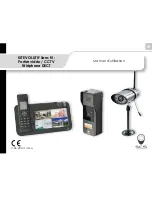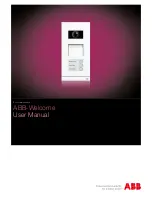
OPC UA communication
9.3 Using the S7-1500 as an OPC UA server
Communication
286
Function Manual, 05/2021, A5E03735815-AJ
Important information on the alarm types
The following characteristics are significant to the differences in the behavior of alarms:
•
Do alarms have a state (e.g. are they incoming, outgoing - with the corresponding time
stamps)?
•
Do alarms require acknowledgment?
If none of these characteristics apply, which means the alarms have no state and do not
require acknowledgment, alarms simply provide information about an event that has
occurred ("Fire and Forget"). It is up to the device receiving the alarm to buffer the alarm for
further use or only for display.
Alarm class determines acknowledgment behavior
This section covers the setting options for program alarms. You can also set the behavior of
the alarms for system diagnostics alarms and PLC supervision alarms (e.g. ProDiag supervision
settings) - refer to the linked additional information for details.
You can find the setting options for program alarms in the alarm editor (double-click on "PLC
supervisions and alarms" in the project tree, select the "Alarms" tab).
For the S7-1500 CPU, you set here via the alarm class whether an alarm needs to be
acknowledged or not. In addition to the acknowledgment behavior, when creating a new
alarm class, you define the default priority of alarms of this alarm class.
You set whether an alarm has a state or not by means of the "Information only" option, for
example, at the alarm type; this results in "Fire-and-Forget" behavior of the alarm.
Here is an example with settings in the alarm editor with different alarm classes ("PLC
supervisions and alarms" in the project tree):
•
First line "Program_Alarm": Does not require acknowledgment, information only ("Fire and
Forget").
•
Second line "Program_Alarm_1": Requires acknowledgment and has a state, which means
the alarm includes information on whether it is incoming or outgoing.
•
Third line "Program_Alarm_2": Does not require acknowledgment and has a state, which
means the alarm includes information on whether it is incoming or outgoing.
Summary of Contents for SIMATIC ET 200AL
Page 2: ......
Page 143: ......
Page 218: ......
Page 250: ......
Page 296: ......
Page 337: ......
Page 365: ......
Page 392: ......
Page 419: ......
Page 451: ......
Page 483: ......
Page 597: ......
Page 648: ......
Page 702: ......
Page 739: ......
Page 781: ......
Page 804: ......
Page 828: ......
Page 853: ......
Page 880: ......
Page 906: ......
Page 996: ...Diagnostics ...
Page 1121: ......
Page 1565: ......
















































